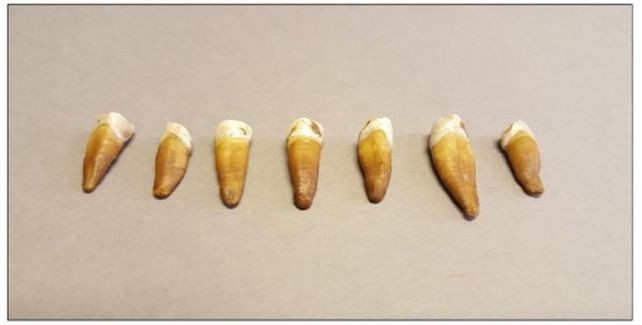“They took a useless man and forged him into the properly, after which crammed it up with stones.”
So declares the 800-year-old Norse Sverris Saga, an accounting of the rise and reign of King Sverre Sigurdsson, who went on to rule Norway from 1184 till his demise in 1202 CE.
Now, due to the efforts of a group of scientists from Scandinavia, Iceland, and Eire, now we have direct, tangible proof that the Nicely Man actually existed – within the type of bones, freshly analyzed, found on the backside of the very properly described.
The Nicely Man is barely a throwaway line describing a battle that befell in 1197 CE – a corpse thrown right into a fortress properly by an invading pressure, most likely to make any water therein undrinkable by decaying in it. However that throwaway line has all of a sudden grow to be some of the important within the saga – by being the primary incident in such a doc ever to be linked to actual, historic stays.
The bones in query symbolize a single particular person discovered all the best way again in 1938 on the backside of an outdated properly at Sverresborg Fort close to Trondheim in central Norway. Again then, we did not have the subtle genomic evaluation instruments which are obtainable now, so there wasn’t a lot we may inform in regards to the particular person.
However, properly, now we do have these instruments. So a group led by genomicist Martin Ellegaard of the Norwegian College of Science and Expertise determined to revisit the bones of the Nicely Man to see what secrets about his life could also be locked inside.
“That is the primary time that an individual described in these historic texts has really been discovered,” Martin says. “There are loads of these medieval and historical stays throughout Europe, and so they’re more and more being studied utilizing genomic strategies.”
Osteological analysis revealed in 2014 confirmed that the bones belonged to a person who was between the ages of 30 and 40 when he died. Martin and his colleagues undertook an intensive marketing campaign that concerned radiocarbon relationship, gene-sequencing, and isotope evaluation to get a extra full image of the person’s identification.

The radiocarbon relationship confirmed that Nicely Man died round 900 years in the past – in keeping with the date of the 1197 CE invasion of Sverresborg Fort. We additionally know, due to the genomic evaluation, that he doubtless had blond or mild brown hair, and blue eyes.
Because of a complete database of recent Norwegian genomes, the researchers have been additionally in a position to determine the place the person was doubtless from – the southernmost Norwegian county, Vest-Agder, lots of of kilometers from Trondheim.
“A lot of the work that we do is reliant on having reference information,” says genomicist Ellegaard. “So the extra historical genomes that we sequence and the extra trendy people that we sequence, the higher the evaluation will probably be sooner or later.”

Isotope evaluation is a device that may assist verify radiocarbon relationship, but additionally details about how and the place an individual has lived. Scientists extracted isotopes of carbon and nitrogen from Nicely Man’s bones, and linked the ratios to a weight loss program wealthy in seafood.
We do not know his title, or the style of his demise; he was useless earlier than he was thrown into the properly and rocks piled in on prime of him, in keeping with the saga. However it’s doable that he died through the invasion of Sverresborg Fort.
The occasion was a stealth assault carried out by the Roman Catholic enemies of King Sverre (often known as Baglers, or Bagal, for the crosiers carried by bishops). Whereas he wintered elsewhere, the Baglers invaded his fortress in his absence.
“Thorstein Kugad accepted service with the Bagals, and went with them,” the saga reads. “The Bagals seized all of the property within the fortress, after which they burnt each constructing of it. They took a useless man and forged him into the properly, after which crammed it up with stones. Earlier than they left the fortress they referred to as upon the townsmen to interrupt down all of the stone partitions; and earlier than they marched from the city they burnt all of the King’s long-ships. After this they returned to the Uplands, properly happy with the booty that they had gained of their journey.”
Based on the saga, the Baglers spared the individuals inside, leaving them nothing however their garments – however contemporary corpses do not fall from the sky, and it is believable that the occasion wasn’t fully cold. The Nicely Man might even have been a Bagler himself, slain by the fortress’s defenders.
“The textual content is just not completely right – what now we have seen is that the fact is far more complicated than the textual content,” explains archaeologist Anna Petersén of the Norwegian Institute of Cultural Heritage Analysis.
The analysis additionally demonstrates the ability of a complete genomic database, robust historic data, and the way the 2 could be united to unveil the secrets and techniques of the previous.
The analysis has been revealed in iScience.





